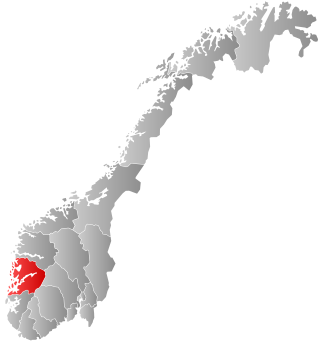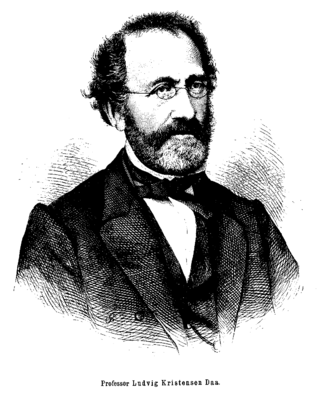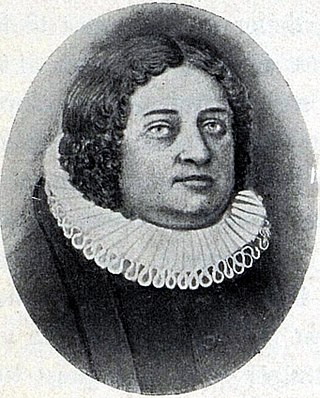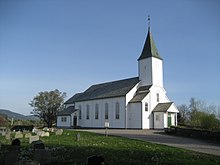
Vik is a municipality in Vestland county, Norway. It is located on the southern shore of the Sognefjorden in the traditional district of Sogn. The administrative center of Vik is the village of Vikøyri. Other villages in the municipality include Feios, Fresvik, Nese, and Vangsnes.

Ludvig Daae was a Norwegian jurist, landowner and politician for the Liberal Party. He was the Norwegian Minister of the Army from 1884 to 1885 on the cabinet of Prime Minister Johan Sverdrup.

Jens Stub was a Norwegian priest and politician. He was vicar on the island of Veøya and served as a representative at the Norwegian Constitutional Assembly at Eidsvoll in 1814.

Fana is a former municipality in the old Hordaland county in Norway. The municipality was located in the central part of the Bergen Peninsula, south of the city of Bergen. The administrative centre of the municipality was the village of Nesttun. The roughly 200-square-kilometre (77 sq mi) municipality existed from 1838 until 1972 when it had 44,402 residents, making it one of the most populous municipalities in the nation. The area of the former municipality encompassed the southern half of the present-day Bergen Municipality in Vestland county, it specifically included the present-day boroughs of Fyllingsdalen, Ytrebygda, and Fana, as well as the southern part of the borough of Årstad.

Ludvig Kristensen Daa was a Norwegian historian, ethnologist, auditor, editor of magazines and newspapers, educator and politician.
Claus Nils Holtzrod Daae was a Norwegian priest, educator and politician.

Anders Daae was a Norwegian prison director.
Anders Daae was a Norwegian-American physician.

Iver Erikssøn Leganger was a Norwegian priest and author.

Leikanger Church is a parish church of the Church of Norway in Sogndal Municipality in Vestland county, Norway. It is located in the village of Leikanger, along the northern coast of the Sognefjorden. It is the church for the Leikanger parish which is part of the Sogn prosti (deanery) in the Diocese of Bjørgvin. The white, stone church has a large wooden steeple. The building was constructed in a long church design around the year 1250 using plans drawn up by an unknown architect. The church seats about 220 people.

Lygra Church is a parish church of the Church of Norway in Alver Municipality in Vestland county, Norway. It is located on the small island of Luro. It is one of the four churches for the Knarvik parish which is part of the Nordhordland prosti (deanery) in the Diocese of Bjørgvin. The white, wooden church was built in a long church design in 1892 using plans drawn up by the architect Peter Gabrielsen Spjotøy. The church seats about 180 people.
Nynorsk salmebok is a Nynorsk hymnal that was edited by Bernt Støylen, Peter Hognestad, and Anders Hovden, and first published in 1925. Under a royal resolution of December 18 that year, it was recognized for use in worship services and in country church parishes that adopted it. The hymnal originally contained 711 hymns, and under the royal resolution of October 1, 1926 it was decided to supplement it with 200 Bokmål additions from the old and new Landstad hymnal.
The Sunnmøre Practical Agricultural Society (Norwegian: Syndmøre practiske Landhuusholdningsselskab was a patriotic and non-profit association with the goal of developing business and agriculture in Norway's Sunnmøre district. The society was established on November 2, 1773 by Melchior Falch in the village of Borgund. Falch and the priest Hans Strøm supported the initiative. The founding meeting was also attended by other officials and leading people at Sunnmøre, and several others joined later.
Johan Christopher Haar Daae was a Norwegian priest and politician.

Anders Daae was a Norwegian priest and landowner.
Ludvig Hanssøn Munthe was the Bishop of the Diocese of Bjørgvin from 1636 to 1649.
Hans Conrad Thoresen was a Norwegian priest, a member of the Storting, and Henrik Ibsen's father-in-law.
Peder Carolus Jonsen Fylling, also known as Per Fylling, was a Norwegian folk material collector, book and antique collector, local historian, and author of cultural history books and articles.

Fredrik Arentz Krog was a Norwegian barrister.
Espe is a manor house and estate located at Boeslunde, between Korsør and Skælskør, Slagelse Municipality, some 100 kilometres southwest of Copenhagen. Espe has been listed on the Danish registry of protected buildings and places since 1918. The main building dates to the 18th century but was adapted to the Late Neoclassical style in 1848. The manor and estate has been owned by members of the Moltke family since 1810.











